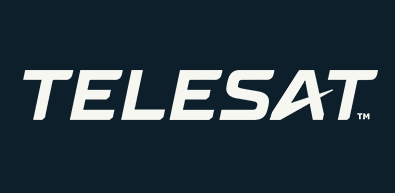
OTTAWA – Telesat today announced its first quarter 2022 financial results, which shows consolidated revenue decreased 3% to $186 million compared to the same period in 2021.
“When adjusted for changes in foreign exchange rates, revenue declined 2% ($4 million) compared to 2021,” a press release explains.
“The revenue decrease was primarily due to a reduction of service for one of Telesat’s North American direct-to-home customers, termination and reductions on contract renewal of certain services and a decrease in equipment sales to Canadian government customers, partially offset by increased services provided to customers in the mobility market as it continues to recover from the impact of COVID-19.”
For the quarter ended March 31, 2022, Telesat also reported adjusted EBITDA decreased 4% to $146 million and net income of $61 million (an increase from $41 million in Q1 2021).
“We had a busy first quarter and it sets us up well to achieve our objectives for the rest of the year and beyond,” said Dan Goldberg, Telesat’s president and CEO, in the press release.
“We signed an important partial renewal with the DISH Network and entered into another agreement to support broadband connectivity for the cruise industry that makes use of virtually all of the capacity that Dish did not renew,” he said.
“We remain highly confident in the promise of our revolutionary Telesat Lightspeed constellation and at this time are actively seeking to complete the financing and commence full-scale construction of the program.”
Today, during a conference call with investors, Goldberg indicated the missing piece is the close of the discussions the company is having with export credit agencies.
Noting they ran into supply chain issues in early Q4, which caused delays and inflationary pressures on the program, the Telesat CEO said they have “updated the program and worked through those issues” and are “now back reengaged with the export credit agencies.”
While Lightspeed was originally to consist of 298 LEO satellites, the plan Telesat is moving forward with and speaking with export credit agencies about is a constellation of 188 satellites in orbit and “10 other in-orbit spares to provide some redundancy and resiliency,” Goldberg said.
During the conference call Goldberg was asked about competition from Amazon’s LEO satellite system Project Kuiper.
In response, Goldberg indicated he is not concerned about Telesat’s competitive positioning. “I think their consolation’s really more optimized for the primary market that they’re focused on serving, which is more the consumer broadband market,” he said, noting the constellation Telesat is building is focused on and built for the enterprise and government market.
“And it looks like right now they’re not going to be having polar coverage,” Goldberg said. “There’s some limitations there, so our business case is intact.”
For more, please click here.



